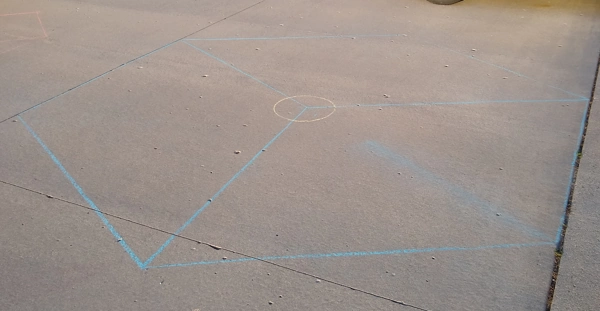Basics of thrombus
Let’s continue on with the discussion of summertime activities today. When I was younger, we used to play four square on the driveway. We didn’t play the normal way where you bat the ball around. The player would catch & hold the ball as it entered their square, so that play was more like a series of turns rather than a continuous volley.
When the player threw the ball, we had a whole set of keywords for all these weird moves you could do. Each move had its own rules associated with it. For example, if someone said “cherry bomb”, they would bounce the ball as hard as they could in your square, and then you had a count of ten to go recover it from wherever it had bounced off to. I’ll try and list as many of these move names as I can remember:
- cherry bomb
- baby bounces
- target
- tea party
- poison
- bus stop
- black magic
- white magic
- rainbow
- mystery box
Anyway, my family would play four square every so often when we were together for a number of years, but gradually we switched over to doing the normal volley-style game. Over the summer of 2020, we had a lot of spare time, and we started playing it a little more often. What we quickly discovered, though, is that it was a lot easier to get three people together to play than four. Usually what we’d do was just play in four squares but with one unoccupied.
At some point, I had the idea that instead of playing on a square court, we could adjust the court to better fit three players. I came up with the design for a hexagon-shaped court, split into three equal rhomboid regions. “Three rhombus” ended up leading to the elided name “thrombus”, which stuck despite also being the medical term for a blood clot.

I noticed that the center of the court was the hardest place to make a good call on whose space the ball had bounced in. So I added a 8–12″ radius circle in the center of the hexagon, with some special rules surrounding it. We took to calling this circle the “wallace”, the “walter”, or the “wilson”.
Normally in four square, if a player hits the ball and it bounces inside the court, it becomes “someone’s problem”. If it lands in the hitter’s space, they’re out. If it lands in someone else’s square, they are responsible for hitting it again, aiming to again hit somewhere outside their square but inside the court.
When the ball hits the wallace, it instead becomes “no one’s problem”. If it bounces from the wallace to outside of the court, no one is out. If it bounces into someone’s square (including the hitter’s, though that would be rare), they now become responsible for the ball, and play continues as normal. If it bounces a second time in the wallace, it becomes a free ball, and anyone can go after it (normally, you are limited from going after a ball in someone else’s “airspace”).

The wallace helps resolve a lot of boring refereeing with continued play, so it tends to extend volleys, generate interesting situations, and improve the overall flow of the game. As we played on the hexagon, we gradually developed a set of consensus “house rules” that worked well for the court shape and resolved some edge cases with the wallace.
We originally started using the hexagon just because we didn’t have enough players, but it actually ended up being so fun that we only play thrombus now, regardless of how many players we have (just rotating spots if we have more than three). I think the angles between players and the shape of the space you defend just work better and make for more fun than the traditional squares.
I’ve really enjoyed playing thrombus, and I would like to get more people interested in playing it. I think it would be really cool to eventually start some sort of thrombus league and really see how the game could develop with more players involved. If you have any questions about constructing a court and playing it yourself, please let me know.
Have you ever rolled your own version of a game?
Did you ever play the weird version of four square as a kid?
Would you like to know more about how to play thrombus?
Let me know your thoughts at my Ctrl-C email: gome @ ctrl-c.club.